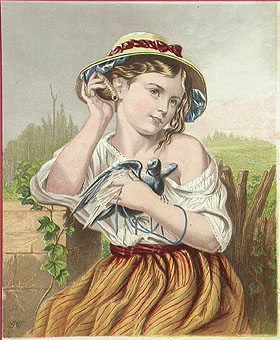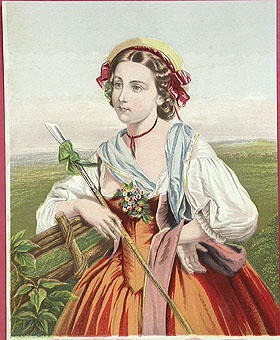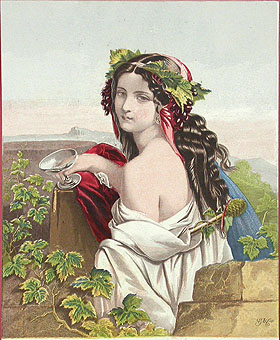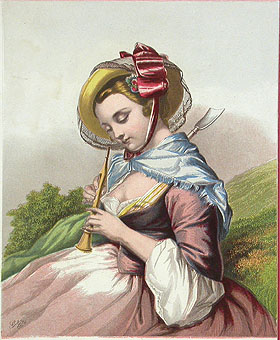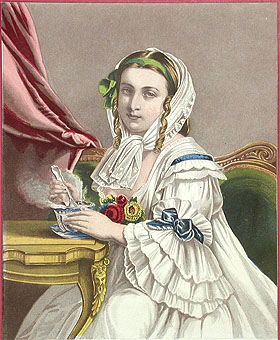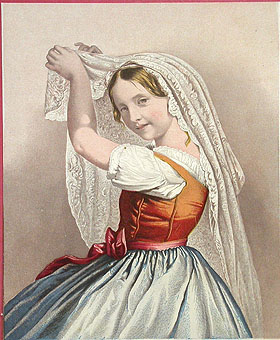Baxter Prints by Kronheim
Some of the most beautiful Victorian prints to come to Panteek are these vibrant images by Joseph Kronheim using the celebrated Baxter process. These vivid prints are original designs showcasing the fashions, landscapes and popular sports of Victorian England and Europe.
The detail and depth of color is created by the Baxter method, a complex process which made the first truly commercial color prints. The Englishman George Baxter developed a special type of oil paint to apply one color at a time via an engraved steel plate and cut-away wood blocks which he patented in 1835. Due to financial difficulties, Baxter granted licenses to a few other printers. One of them, Joseph Kronheim, was an expert engraver and artist who produced richly-colored prints on more than a thousand different subjects. With the advent of chromolithography, this process became too expensive and laborious to continue, and Kronheim & Co discontinued the Baxter method of printing. More information on this fascinating printing process is available from the
New Baxter Society,
which promotes interest in the work of Baxter and his
licensees. Our prints originate from the collection of Alfred Ernest Owen, a prominent Englishman, and engineer who was involved in the development of the bicycle, automobile and airplane. An avid collector of art, he was the elected President of the Baxter society in 1926 and bought the entire stock of Kronheim prints remaindered when the company discontinued the Baxter printing process. These prints were secured for over half a century in a vault under Owen’s moated mansion New Hall, Sutton Coldfield, dating from the year 1200. When Owen died at the age 60, the prints remained undiscovered in this vault until 1982, when they were consigned to Christies of London, who spent five years cataloguing the prints for the eventual sale in 1987.
|


